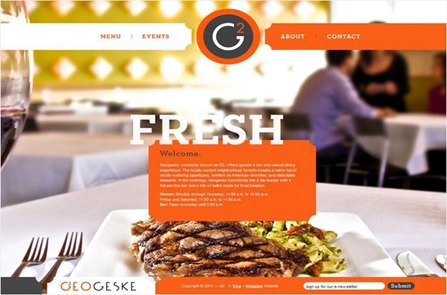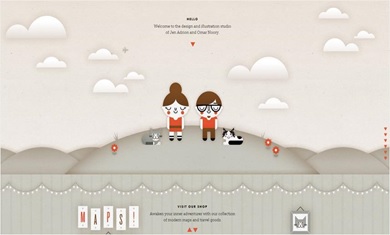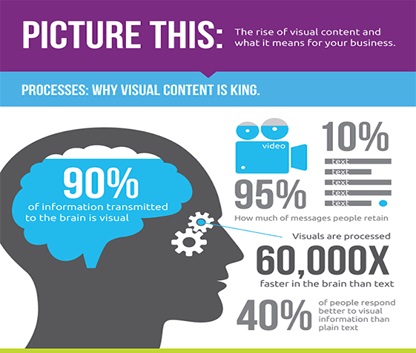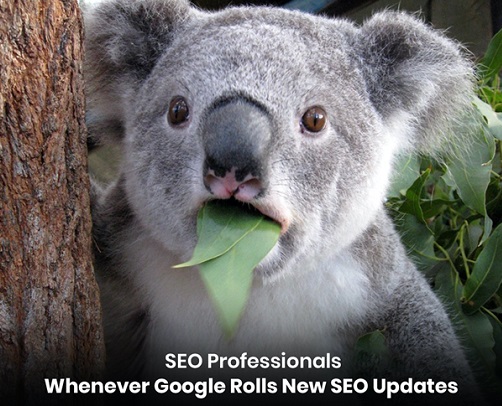One brutal fact of the online world is this – A first impression is often the last impression. If your website looks dowdy and boring, you have lost your guy there itself, and most likely he isn’t coming back too. And there in enters “The Visuals”. If you want to entertain & engage your target audience and drive home the point, don’t skimp on standout visuals – be it pictures, infographics, videos etc.
Let us first consider some interesting facts about visual content.
Some interesting stats about visual content
If you’re a numbers person, we’ve got some very interesting stats for you on why you should even keep reading down this post.
- Visual content is processed 60,000 faster and can speed up learning by 400%
- Most digital marketers now use video as their primary form of marketing, and 40% of marketers post visual content multiple times a week.
- Facebook posts are 3.5x more engaging when they come with images. On Twitter, it’s 150% more engaging.
- Tweets with images generate 38% more retweets
- Infographics can help increase a website’s traffic by 12%
- Posts with visual content generate 3x more backlinks
- 66% of marketers believe that posts with images generate better ROIs than Google ads.
- Email series with images have higher click-through rates and conversion rates
- People are 60% more likely to click on a business page with visuals on an organic search result page
So, what is visual content marketing?
In an age of ever-shrinking attention span, visual content marketing has become an important technique to attract user attention and engagement. Visual content marketing revolves around the use of visual content like images, videos, and other types of media content – to draw meaningful attention from an audience. Visual content creation brings an edge to content marketing by enabling complex concepts to be communicated more effectively and efficiently, compared to using text only.
Visual marketing is growing more intricate by the day, with more new visual elements and visual tools cropping up thanks to technological advancements. Today, brands can easily enrich their visual marketing strategies with many different types of visuals, from infographics to comics and animation, memes, videos, presentations, and interactive visuals.
However, visual content marketing takes more than just adding stock images all over your website. It requires thoughtful planning to choose the right type of visuals to communicate a specific message. For instance, considerations like an audience’s main channel or devices are necessary to determine what type of format to use for an image or video. You’ll probably need to compress an image when posting it on social media, but the original, uncompressed format can go up on your desktop site.
5 reasons why visual content marketing is important
Now, let’s take a close look at the reasons behind those amazing stats on visual content. Here are some reasons you should not to underestimate visual content
1. Absorption is faster with visuals
While reading, do you find yourself visualizing what you read? If yes, that is because 90% of the information transmitted to our brain comes in visuals, and 65% of humans are visual learners. So, why shouldn’t it be given a prominent place as an integral part of the content storytelling process?

In short, create visual content instead to make your point. Since that’s the best way to grab attention and make a lasting impression in just a few seconds and drive home the message faster. Better still, you would have the visitor hover over your website admiring your visuals.
The image here (above) shows restaurants tempting its visitors with exotic pictures of food/ambience pictures in their websites. Even if the visitor didn’t have any intention of stopping by, the photographs attract and produce them into looking at the menu. And there, you have won a lead.
2. Drive engagement
Images add a punch. Written content alone may help you to land in search engine results, but to make the page interesting and engaging so that your readers return to it regularly, visual aid is important.

What’s more, visual content creation makes design look more eye-catching, no matter how boring the subject. In the picture above, you can see how a lovely picture has managed to transcend a website with seemingly boring reports to something beautifully designed and highly engaging.
It’s no wonder visual content generates 94% more views and has an astounding 50x potential for making it to top-page results. Rich visual content give a site a stylish, modern edge, making it look more appealing to your audience.
Analytical studies of social media trends show that an image gets shared at least 60 times more than written content. Image searches are equally common too, they are one of the leading sources for web traffic.
Moreover, with the continuous evolution of these social media platforms, it is getting easier to share visuals with readers. Then why not take advantage of these resources to build the traffic that you always wanted.
3. Get your message across correctly
Written information can only do so much. To boot, texts are often marred by grammatical errors and verbal misrepresentations. For example, let’s say Zizu is a popular architecture piece. You write an amazing article on Zizu, describing it – how beautiful it is, how well-designed it is etc.
Nevertheless, all your readers can do is imagine and the worst part is each reader will imagine it differently, according to their own personal preferences; there would be no uniformity.
However, if your text accompanies a picture of Zizu, it will leave no scope for ambiguity and will form a lasting image in the reader’s mind of how a Zizu is supposed to look. In fact, people retain 95% of the information when it’s communicated through visuals, compared to 10% through text.
Not only will this remain in their memory but will also serve as a point of return (meaning, reader may sometimes think: Ah yes, I know what Zizu is, I read it on so and so website). Likewise, not all readers may have time to go through the complete article, they would want a brief introduction just to remember what it is. And an image in the introduction is all you need to imprint on the reader’s mind.
4. Make your information e to grasp, and appealing
Visuals are also killer tools when it comes to triggering emotions and offering experiences. The collage above shows how the hospitality industry uses beautiful location pictures to attract visitors. A lot of product-based websites also use videos to explain what they do instead of just writing it down. Visuals are self-explanatory and instantly digestible, making your message easy-going to the memory and understanding of your audience. It’s no wonder visuals can be processed 60,000 times faster. In a few seconds there is a healthy exchange of information with the reader.

A large amount of information can be shared through infographics and montages via pictures, icons, colors, design, skillful video editing etc. As the saying goes, a picture is worth a thousand words. That also means that visual content marketing strategies can help cut down production time for your content significantly. Many critics may argue that images and videos take time to load, but with the kind of editing tools easily available in the market, it is getting more and more simple to crop, compress, resize images or videos as per your website requirement.
5. Drive more sales
The importance of visual content for sales cannot be over emphasized. Almost 32% of businesses use visual content for sales. If you’re running an e-commerce site or selling anything on your website, visual content is critical to your conversion rates. Just imagine an e-commerce site with a scanty collection of product pictures versus one with tons of images showing products from different angles and in different settings. The latter would most likely record higher conversion rates.
People are keen on visuals especially when shopping online for physical products. With pictures, you don’t even need much verbal explanations. Use high-quality images to provide prospects with all what they need about your product or service, and they’ll be likely to buy from you.
5 must-have types of visual content for marketing campaign
Let’s quickly take a look at 5 types of visual content that can help you harness all the benefits we’ve discussed above
Images
This can be anything from pictures representing a concept or thought, to photos of real-life people, product images, etc. Note that images are not all created equal and some may be more appealing than others. Always aim to use original, high-quality images. Thankfully, you can find tons of them on royalty-free image sites like Unsplash and Flickr.
If you are thinking where to get images from, here is our popular blog on 20 websites that give you stunning images.
Videos
You don’t necessarily need to create original videos. Any relevant video that you share on your posts can go a long way in boosting engagement. For instance, videos can increase the conversion rate of a landing page by a whooping 89%. You can explore many types of videos, but the most popular ones are explanatory videos, how-to videos, customer testimonials, and animations.
Also Read: Why Great Brand Stories Need Videos
Screenshots
Screenshots give you more credibility and authenticity. They allow you to show your audience that you really know your stuff. Use screenshots to show your audience how your product or services work or how to tackle their challenges.
Ahrefs does this really well in their blog – pick up any blog of theirs and you will find tonnes of screenshots to explain a point really well.
Memes
Chances are that your audience loves to see memes. You can use memes to invoke all sorts of emotions and imaginations in your readers mind. There are many tools that you can use to create memes quickly. It could be as simple as uploading the background image (or choosing from a premade library of images) and then inserting the desired text. Probably a matter of a few clicks. Here is one we created recently for our newsletter.

Infographics
Infographics are the quintessential image that is worth a thousand words. In fact, a 10,000-worded guide can easily be condensed into a short infographic. Try using infographics for how-to guides and explanatory posts. Also, when creating an infographic, keep a few design principles in mind – color chemistry, shape and font combination, and white space.
Check out this blog to see how infographic content has been used in place of normal text for better engagement.
Visual quotes
Quotes command a lot of attention, and when you visualize them, you put them in a whole new dimension. Visual quotes are especially useful for social media content – people love sharing visualized sound bites. Avoid using hackneyed and over-laboured quotes. Instead, search for fresh quotes from industry experts and thought leaders.
For the visual content creation, try branding all your quotes using your brand colors, distinctive text styles, and other unique branding elements.
Worksheets
Use worksheets to provide your audience with actionable clues. Like infographics, worksheets present lots of textual information with visual appeal. Worksheets like checklists, spreadsheets, and even interactive calculators can help you assert your expert authority by providing detailed answers to pressing questions through visual aids. When creating worksheets, try to make them as specialized as possible – avoid generic content that glosses over the fine details.
Slides and presentations
This is a quintessential top-of-the-funnel visual content, where the goal is to enlighten and educate your audience on the unique concepts and features of your brand. Slides do a better job at creating a deeper connection with your audience compared to their text counterparts – whitepapers, prospectus, flyers, etc. Also, slides are highly versatile – you can distill any content to a few slides that are easily accessible and shareable across platforms and devices.
Cartoons and comics
Comics have a way of invoking our imaginations. They appeal to a broad audience and are easy on the memory. But while cartoons revolve around fictitious characters and arouse our sense of humor, they require serious planning and consideration as a visual marketing tool. You need to get everyone involved in the process – not just the creatives, but brand strategists, sales team, customer success reps, and important decision makers.
Interactive visuals
Interactive visuals add a whole new dimension to your content. Customers are increasingly becoming self-directed, preferring to find information at their own pace. With interactive visuals, your visitors can quickly zoom in on the exact information they need. Think of an interactive slide expressing the dynamics between multiple factors, say price and quantity, or price and features. Users can easily input specific values to find out what the outcome might be under those circumstances.
Emojis and GIFs
Emojis and gifs have become the shorthand for expressing emotions on the internet.
Use emojis and GIFs to enrich lines of texts with emotional triggers. GIFs are even more versatile. You can use simple gifs for your banners, product image, social media posts, etc.
If you are looking for more visual content formats, here is a related blog to check out – Visual content formats that can triple your content marketing results.
Wrapping Up
If done correctly, the content of your website can be enhanced greatly by great visuals. This works on the basic premise that the eyes love visuals and the brain comprehends it faster than chunks of text.
And here is the thing – Micro-content is being projected as the next big thing, be it a short video montage or graphic art, everyone wants a piece of it. The resounding success of platforms like Instagram and Pinterest is more of a phenomenon than just an evidence.





